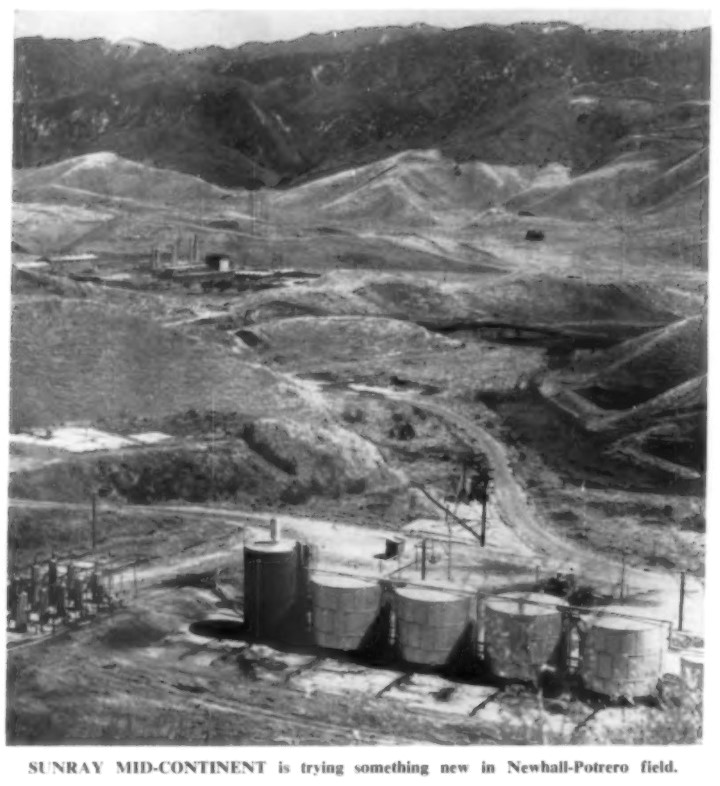Waste Water and Propane
Besides brine, fresh water would also invade some of the wells. To dispose of this waste water, a water injection program was begun in 1952. By the early 1960's, when improved production was noticed, it became a water flooding project, similar with what was being done on the Placerita field.
Water injection is mainly about pressure maintenance. Water flooding is more about pushing the oil towards a producing well. Both the terms are often used interchangeably.
In 1957, experiments began using the nation's first combination L.P.G. (or propane) storage and secondary recovery project. There were two goals. First, to increase the amount of oil recovered by injecting propane into the ground increasing the underground pressure. Second, this injection is also storing the propane underground. During the winter months when there little demand, the propane is left in the ground. When summer, and a higher demand comes, propane is removed from the ground to be sold. This was first attempted in shallow oil zones. The results were not very good. In 1960, this was tried in a deeper zone, but again the results were not good and the project was ended in 1964. Whether the propane was still injected into the ground for storage, was not reported.

"Something new" was the injection of propane for storage and increasing zone pressure to increase production. From Oil & Gas Journal, July 8, 1957.

